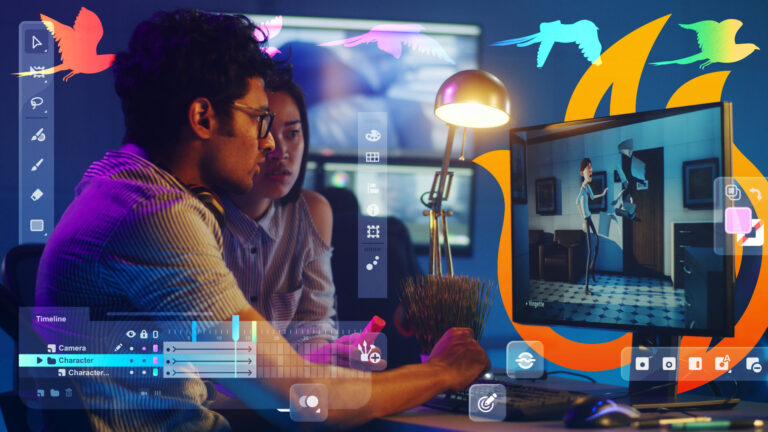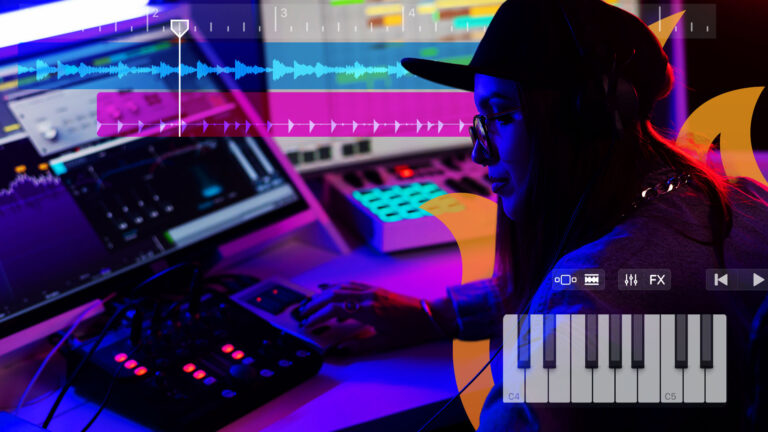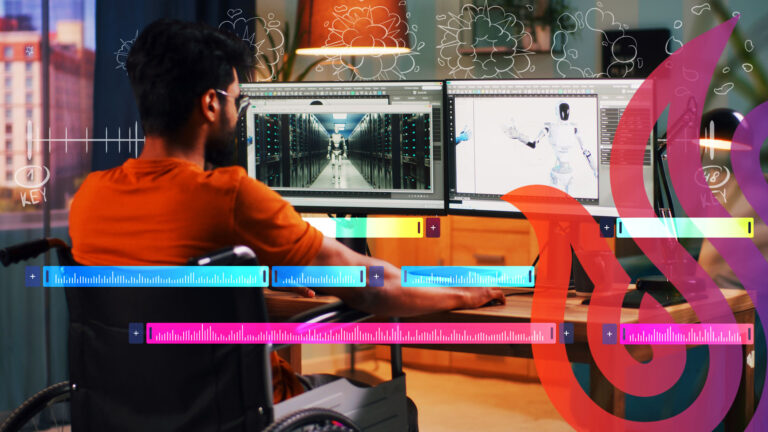Modern animation and game industries are growing unlike any other form of entertainment in the world today. Technology has increased the scope of modern productions in almost every way like budget, staffing, and technical effects. This growth is creating entirely new jobs and artforms. The role of the technical artist is relatively new, and it serves to marry the aesthetic design of a project with practical implementation practices. In some ways, technical artists are both traditional 3D artists and programmers. They often require skills in both 3D modeling and texturing as well as some coding for shaders and artist tools. Becoming a technical artist is great for artists who want to work on multiple components within the video game production process. Technical artists are also needed in animation or VFX studio working on short movies, animations and VR experiences.

What is a Technical Artist?
Technical Art is a discipline needed in any company using computer graphics pipeline to produce a video game, animated film, AR/VR experience or VFX for live action movie. Technical artists are familiar with the artistic and technical aspects of asset creation pipeline, animation and rendering. They might also do shot work, for example for animated film. They focus on one or more disciplines: modeling/texturing, rigging, shader writing, lighting, composition, visual effects (simulation) and art specific tools and pipeline programming.
In game design, one can’t always predict what hardware a user is going to use to run a game. Different operating systems for PCs can require different coding architecture to achieve certain effects. Technical artists working in a game studio need to be familiar with a game engine and especially real-time rendering pipeline, as well as the limitations of the platform that they are building the product for. Often the point of hiring a technical artist is that their knowledge of the different aspects of art and programming gives them unique insight on how to achieve an effect without sacrificing the performance of the project.
Technology has come a long way, but it still has limits to what it can do. While the technology might exist to create a game with fully simulated physics or photorealistic ray-traced graphics, it may be too much for most computers to run both. If a video game looks beautiful but cannot run on normal household computers there isn’t really a market for it. On the other hand, video games need to stand out from other titles in a competitive industry, and this is often done by offering a unique art style or increased fidelity.
Technical artists can find ways to achieve impressive looking effects while making sure that their use does not tax a system to the point of creating a negative experience for the user. The ability to use computers to create short cut effects is seemingly boundless. Many passionate technical artists have created effects that look like they should be resource intensive but operate quite quickly. For example, a technical artist might require a running water effect in a scene and need to choose a route of achieving this effect that is less resource intensive such as making a simple deforming mesh or shader that would give the appearance of flowing water without the extra computation that goes into simulating it, so that it can run on all computers.
A technical artist will create tools to improve the team’s efficiency. This may include Maya scripts and/or standalone scripts and software. They are always trying to achieve the best performance possible for whatever effect needed. This can be done by combining 3D modeling, shading, rigging and programming other tools when the current set does not suffice. A company saves time and money by technical artists who perform as both dedicated artists and programmers. Technical artists also increase the value of the project by ensuring that the product being delivered to consumers is as efficient as possible. Many consumers have been wowed by technical effects in video games that not only look fantastic but seem way ahead of their time in terms of performance. An example of great optimization are full 3D games that were originally designed to run on computers engineered to run on mobile devices.
Modeling and Shading
While some technical artists are required to do conventional 3D modeling like creating characters, they may also be required to create new 3D models or touch up old ones to bring them within a certain performance standard. 3D models are made from small triangles called polygons and the more detailed the object the more polygons the computer will have to keep track of. Higher polygon models are sometimes needed but many workarounds exist to make a model look just as detailed using fewer polygons. Smart modeling practices such as not modeling the sides of objects that won’t be seen can also be used to reduce polygon counts.
Technical artists are hired to work on these components because of their knowledge of programming. Understanding good optimization techniques allow technical artists to create assets for game engines that are specifically designed to be streamlined. In addition to making optimized models, one can also look at shading effects to save computer memory. Computer “shaders” refer to elements of code that creates lighting and shadowing effects on the surfaces of objects. Computer shaders create complicated geometric effects that would have previously required dedicated modeling.
Instead of creating a whole bunch of separate 3D models for clouds one can use a shader that generates new procedural cloud shapes on the fly. One can even use shaders to give low polygon assets the appearance of having more detail with something called a normal map. By taking the lighting and texture data from the high detail model and applying it to the low detail model it can reduce the polygon count and performance requirements while having the same amount of detail. Having models that are lower detail means that artists can also use more of them in a scene which can help a game world feel alive and full. Some visual effects might also be too intensive to use if higher models are used so technical artists are hired to find the right balance between performance and appearance.
Rigging
Rigging is the process where a 3D artist takes a 3D model and sets it up to perform some sort of motion. A very common form of rigging called skeletal rigging in which a technical artist creates a “skeleton” or series of joints that move a model like a puppet. A technical artist’s job is to find a way of rigging models that is convenient for the other modelers to use while also being technologically practical. Details on character models like moving hair, swaying belts, and other moving components will require their own type of rigging and software set up. A high-end computer may be able to simulate some of these effects with certain software extensions like Havok or PhysX.
If the creative director of the project decides that they want to advertise toward lower end computers, they may not be able to rely on certain animation or simulation methods and might have to ask the technical artists to find a workaround. In addition to hardware limitations, certain game studios may be under other limitations due to their choice of software. Certain game engines may not support some technologies. For example, cloth simulation effects might work out of the box for some game engines but for others their implementation might require some tweaks or modification. A good technical artist will overcome any limitations in the technology by creating their own tools.
Tools
Some game engines exist to allow creators to make games out of the box and some customization can allow them to do things they could not do before. Most modern game engines allow plug-ins or add-ons installed from either third parties or developed in-house. These tools can be simple in nature or they can fundamentally change how the entire game engine works. Many popular games in the 90s and early 2000s were modifications of other games or game engines. Programmers would take a base game and change the programming to allow it to become something else entirely. This is not too different to what technical artists do when they create new tools to develop for their platform.
Whether by limitation or oversight, sometimes game engines are created without features that might be necessary for a certain effect or convenience. Technical artists should possess a breadth of programming knowledge that allows them to modify technology to work in their favor. These tools could be entirely new programs to create 3D models and textures or they can be simple quality of life improvements to the user interface. If a technical artist finds that the current programs they are using are inadequate they can create new tools that fit the pipeline. For example, if a popular animation software doesn’t have a specific export mechanic that the artist needs, they may create an add-on that does.
Conclusion
Technical artists are the modern renaissance men and women of the game production progression, animation or VFX studio working on short movies, animations and VR experiences.
The various types of skills that they must acquire all complement each other, including programming experience with scripting languages like MEL/Python and more. Thanks to their programming background, technical artists are some of the most effective 3D modelers because they possess an intrinsic understanding of what and where those models are used. Being knowledgeable programmers allows them to create tools and processes that let them create 3D models and textures more efficiently. Becoming a technical artist is perfect for those who want to work in the game industry but find it hard to settle into one specific aspect of it. It is an enriching profession for those who like to be challenged by multiple problems and find creative solutions for several issues simultaneously. Technical artistry is the perfect job for someone who is looking to combine their creative and artistic passion with their interest in computer programming.
Did learning about how to become a technical artist interest you? The Technical Art concentration of the B.A. in Digital Art & Animation degree combines the University of Silicon Valley student’s artistic abilities along with the technical toolkit of the CG world. Traditional technical art courses like drawing, painting, and sculpting help the student develop an artistic eye. Industry standard software programs are used in 3D modeling, 3D animation, texturing and lighting courses. Technical art coursework includes computer programming courses which enable the University of Silicon Valley student to customize tools in CG software programs. The technical art concentration allows the University of Silicon Valley student to focus on lighting and compositing or rigging and scripting.
University of Silicon Valley is uniquely poised to offer a meaningful and valuable education for 21st century students. We believe in an education that directly correlates with the work you’ll be doing after you graduate. Interested in learning more? Contact Us today.


